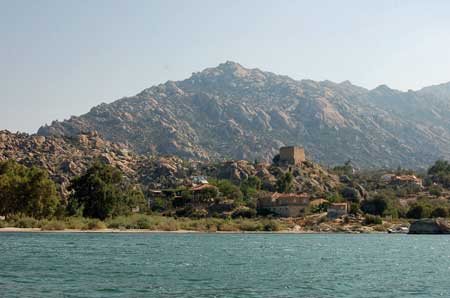
June 10, 1925, 9:30 am
Arkham, Massachusetts
Miskatonic University Faculty Club
Dr. David Clarke, Professor of Archeology, and colleagues

"Good morning David how goes your new class?" asks Dr. Latimer Michaels, a colleague in the anthropology department. His tall frame casts a shadow across Dr. David Clarke as he sits in the comfortable leather chair reading the latest issue of National Geographic. "Did you hear that Raymond Dart chap is coming next month to discuss his latest find? Not sure if I agree with all the Australipithicus talk."*
Activity on campus is slow with the summer term. Dr. Clarke has only one class at the moment, a group of nine dedicated students who are learning about archeology through local sites and digs. In fact, next month Dr. Clark is leading a local dig at the site of an old mill in the woods outside of Arkham.
Donald Chillingstone, a history lecturer, is talking about a theft at the Peabody Museum at Harvard University. "A set of masks apparently. A collection from different cultures. Suspect the thieves may have had inside help."
Dr. Clarke sips his morning coffee and engages in small talk. Eventually Dr. Raymond Randolph, a fellow archeologist in the department, enters the room. He makes a beeline for Dr. Clarke.
"This is it David, our opportunity!" exclaims Dr. Randolph. He holds up a picture of the classic myth of Endymion.

"Some natives have found caves in Mount Latmos in Turkey. These could be the hermit-shelters of dream-oracles of Selene the moon goddess and her sleeping lover Endymion! We must go!"
Dr. Clarke has an interest in the cult of the moon goddess, which has taken some interesting incarnations in different cultures and their archeological records. The Endymion myth is well known. Apollonius of Rhodes is one of the many poets who tell how Selene, the Titan goddess of the moon, loved the mortal god-son Endymion. She believed him to be so beautiful that she asked Endymion's father, Zeus, to grant him eternal youth so that he would never leave her. In alternative translations, Selene so loved how Endymion looked when he was asleep in the cave on Mount Latmus, near Miletus in Caria, that she entreated Zeus that he might remain that way. In either case, Zeus granted her wish and put him into an eternal sleep. Every night, Selene visited him where he slept. Selene and Endymion had fifty daughters who are equated by some scholars with the fifty months of the Olympiad.
"And here's the kicker," says Dr. Randolph. "Dr. Edith Walton is going on the expedition. I know you're partial to her," he says with a wink. "That Brit accent of hers does stir the... heart, I must say."
Dr. Clarke's own research and work showed that the mytheme of Endymion being not dead but endlessly asleep, which was proverbial (the proverb - Endymionis somnum dormire, "to sleep the sleep of Endymion") ensured that scenes of Endymion and Selene were popular subjects for sculpted sarcophagi in Late Antiquity, when after-death existence began to be a heightened concern. The Louvre example, found at Saint-Médard d'Eyrans, France, is one of this class. The myth of Endymion was never easily transferred to ever-chaste Artemis, the Olympian associated with the Moon. In the Renaissance, the revived moon goddess Diana had the Endymion myth attached to her.
"Well, what do you think David?" asks Dr. Randolph.














